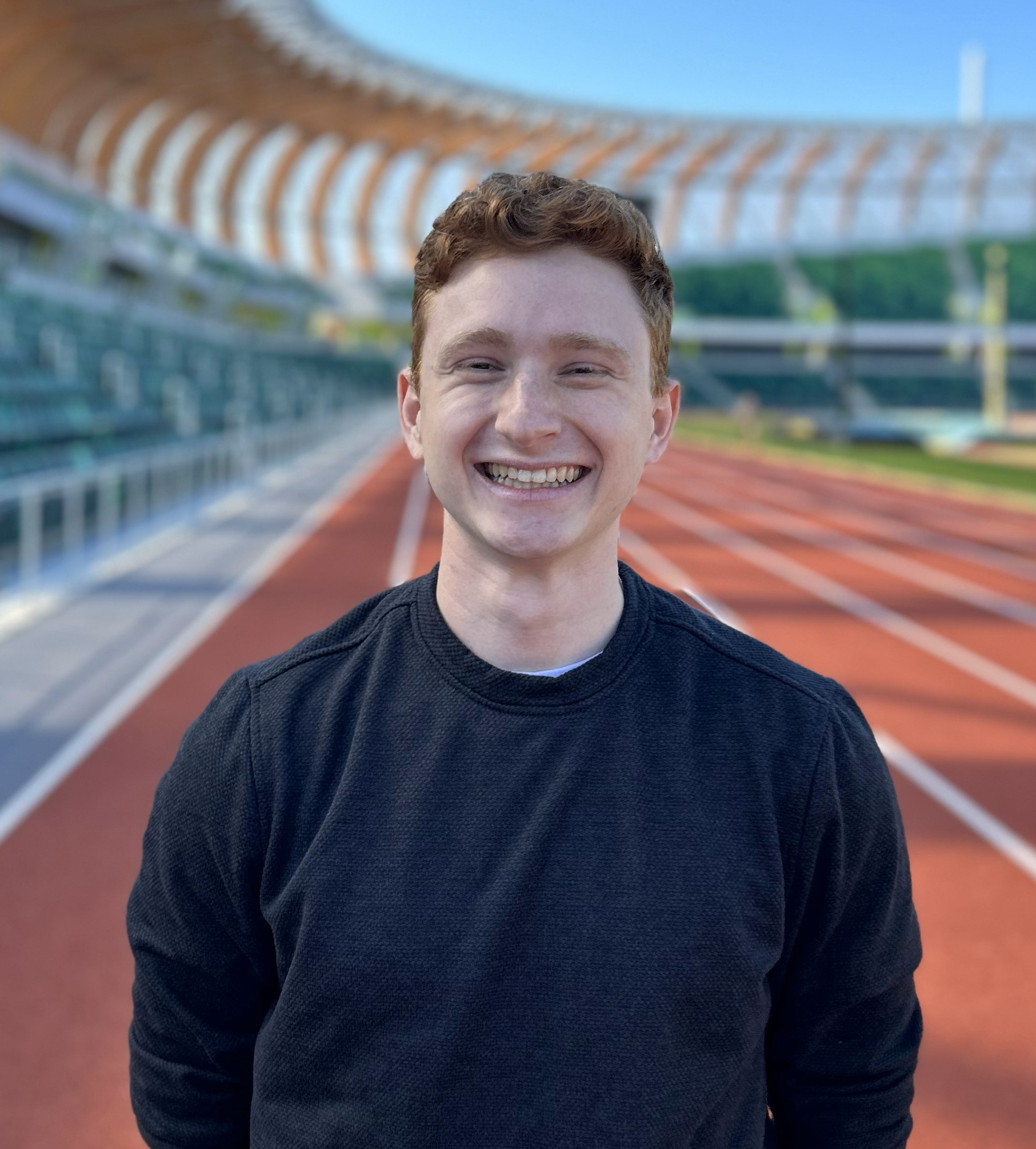Biomechanics
(D-156) Particle Size Dictates Transport Dynamics in the Rat Achilles Tendon

Jarod M. Forer (he/him/his)
PhD Student
University of Oregon
Eugene, Oregon, United States- YP
Yan Carlos Pacheco (he/him/his)
Graduate Student
University of Oregon - Knight Campus
Eugene, Oregon, United States - KL
Kait Link
Research Associate
University of Oregon, United States - MH
Mike Hahn
Professor
University of Oregon, United States - NW
Nick Willett, PhD
Associate Professor
University of Oregon, Knight Campus, United States
Presenting Author(s)
Co-Author(s)
Primary Investigator(s)
Microcirculation dynamics in peripheral tissues are known to be critical for maintaining tissue homeostasis. However, the tendon is a poorly vascularized tissue with few lymphatic or blood vessels1. Fluid accumulation and unresolved inflammation occur in tendon disease and injury, implicating dysfunction of the tendon’s innate microcirculation and clearance mechanisms2. Yet, there is a gap in knowledge concerning the properties of vasculature-based clearance in these tissues. Moreover, the presence and function of lymphatic vessels in healthy tendons is vague, to the point where there is no consensus on their existence in the space3,4. New high resolution near-infrared (NIR) imaging has been used to track particle size dependent transport routes in peripheral tissues using small (blood vessel targeting) and large (lymphatic vessel targeting) fluorescent tracers5. We employed these technologies to evaluate clearance rates and routes in healthy rat Achilles tendons. The rats were split into two groups (exercise and sedentary) to elucidate the effect of mechanical stimulation as well as tracer size on these transport dynamics. We hypothesized that the small tracers would clear faster through the capillaries than the large tracers would through the lymphatics, and that mechanical stimulation through exercise would noticeably improve clearance rates.
Materials and Methods::
Healthy female Sprague-Dawley rats (Charles River Labs, 3 months old) received bilateral 15 µL injections of tracer particles into their hind Achilles tendons. Left legs received IRDye 800CW (LI-COR) and right legs received the same dye conjugated to 20 kDa PEG particles. While under anesthesia, the animals were imaged using an IVIS Spectrum (PerkinElmer/Revvity) to measure the radiant efficiency of the region of interest (ROI). Post-injection, half of the animals underwent a 30-minute exercise protocol on customized NordicTrack treadmills at 10 meters/minute. This made for four groups: Small Tracers + Sedentary (n = 7), Small Tracers + Exercise (n = 7), Large Tracers + Sedentary (n = 8), Large Tracers + Exercise (n = 6). All animals were subsequently imaged with the IVIS Spectrum at progressive timepoints after the injections (1, 3, 6, 24, 48 hours, …). A study timeline can be seen in Fig. 1a. The radiant efficiency was quantified using a manually drawn ROI in the Living Image Software program (PerkinElmer/Revvity). The values were normalized to the value at 1 hour after injection and used to analyze tracer particle clearance from the ROI over time. Longitudinal data were analyzed with two-way ANOVA and parameter data were analyzed with one-way ANOVA in Prism (Graphpad), with significance noted as a p-value less than 0.05. Data are presented as mean ± standard error of the mean. All procedures involving animals were approved by the University of Oregon Institutional Animal Care and Use Committee.
Results, Conclusions, and Discussions::
Representative images show a decrease in fluorescent intensity with time for both tracer sizes (Fig. 1b). Legs injected with the small tracer decreased in fluorescent intensity faster than legs injected with the large tracer (Fig. 1b-c). From 1 to 300 hours post injection both small tracer groups were significantly different than both large tracer groups (all p< 0.0291), yet at no time were the exercise and sedentary groups within a tracer size significantly different (all p >0.4151) (Fig. 1c). The parameters of individual two-phase exponential decay curves show significant differences between tracer groups for rate constant (all p< 0.001), slow time constant (all p< 0.001), and area under the curve (all p< 0.001). The same parameters show no significant differences between exercise and sedentary groups within tracer sizes.
Our findings indicate that tracer size does impact clearance rates as hypothesized, with the small tracer fluorescent signals decreasing at a significantly larger rate than the large tracer. These data compare well to previous experiments conducted around the clearance properties of the knee joint5. However, the more surprising and consequential results of this study highlight that a single bout of mechanical stimulation delivered by running exercise did not improve clearance rates by examining the same parameters. The role of mechanical stimulation in fluid transport of tendon deserves more investigation as rehabilitation in the form of controlled exercise is a common technique both in pre-clinical models of injury/disease and treatment in the clinic. We also plan to further investigate what methods or therapies improve fluid transport in the tendon – whether these be methods already used in the clinic or newly developed ideas. This information would then aid clinicians in providing the most effective treatments to patients.
We illustrate with this study the need to better understand how the Achilles tendon processes fluid both in health and disease or injury. Importantly, any correlation between fluid accumulation and disease state, pain, or other aspects of tendon disease and injury beyond the existence of disruption should be identified.
Acknowledgements (Optional): :
The authors would like to thank Dr. Fabrice Bernard and Dr. Brandon Dixon for fruitful discussion and guidance throughout this research project. This work is supported by the Wu Tsai Human Performance Alliance and the Joe and Clara Tsai Foundation.
References (Optional): :
[1] Chen, T. M. et al. Clin. Anat. 22: 377-385, 2009.
[2] Malmgaard-Clausen, N. M. et al. J Magnetic Reson Img 54: 832-839, 2021.
[3] Tempfer, H & Traweger, A. Frontiers in Physiology 6, 2015.
[4] Tempfer, H. et al. Histochem Cell Biol 143: 411-419, 2015.
[5] Bernard, F. et al. J Biomed Optics 26: 126001, 2021.
